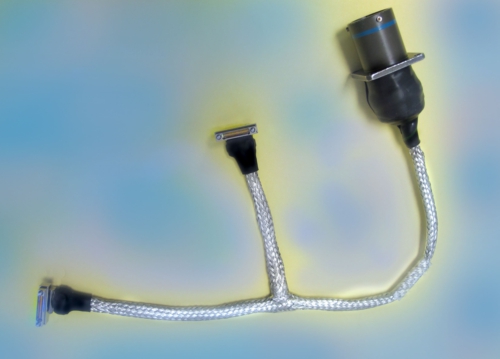May 13 2013
Miniature electronics continue to add circuit functions and increased circuit speed while reducing size and increasing portability.
 Micro to Nano EMI Cable. (PRNewsFoto/Omnetics Connector Corporation)
Micro to Nano EMI Cable. (PRNewsFoto/Omnetics Connector Corporation)
To serve these demands, miniature cable harnesses use fine gauge wiring to remain flexible allowing them to withstand multiple signal systems while remaining robust for the most rugged applications. When needed, micro and nano-connectors are available with locking-systems enabling continuous performance in high shock and vibration environments. To provide signal protection from EMI sources, cable shielding with grounding and drain wires are applied.
As the number of circuit functions increase, the resulting wire harnesses must support a mixture of signal paths, power lines, twisted pairs and other detector lines. The resulting cable is often a combination of different types of wire sizes and shielding. Omnetics' design team works directly with system engineers to optimize cable size, flexibility and current carrying capacity to ensure they meet the size and performance expected. Individual wiring inside cables are usually assembled with insulated copper wire composed of 7 or 19 strands per wire, but when flexibility is critical, stranding of up to 37 wires can be used. In some cases, cable routing requires "T" shaped breakouts for signal "drop-off" points that require precision wiring and shielding management. A method of over-molding at those breakouts and at the final termination points is often the best solution. This over-molding is done as part of the cable assembly process before testing.
When diameter is not critical but flexibility or "low flex resistance" is very important, cables with loose insulation jackets can be used to allow the wiring to bend more easily inside the overall jacketing material. Waterproofing is often specified within portable military and medical interconnections, probes and catheters and in some cases, special seals, boots and/or materials are selected to provide sealing, anti-bacterial protection as well as sterilization.
Equipment benefiting from custom wire harnessing range from healthcare electronics to military radios. In the medical industry, hand held surgical tools, dental camera modules, cosmetic lasers and even spinal pain management tools use uniquely designed wiring to support both patient comfort as well as technical performance. Application-specific wire-harnesses are used in military sensor system detectors, portable cameras, surveillance modules and unmanned aerial vehicles amongst others. Today's UAV's are faced with extreme design challenges.